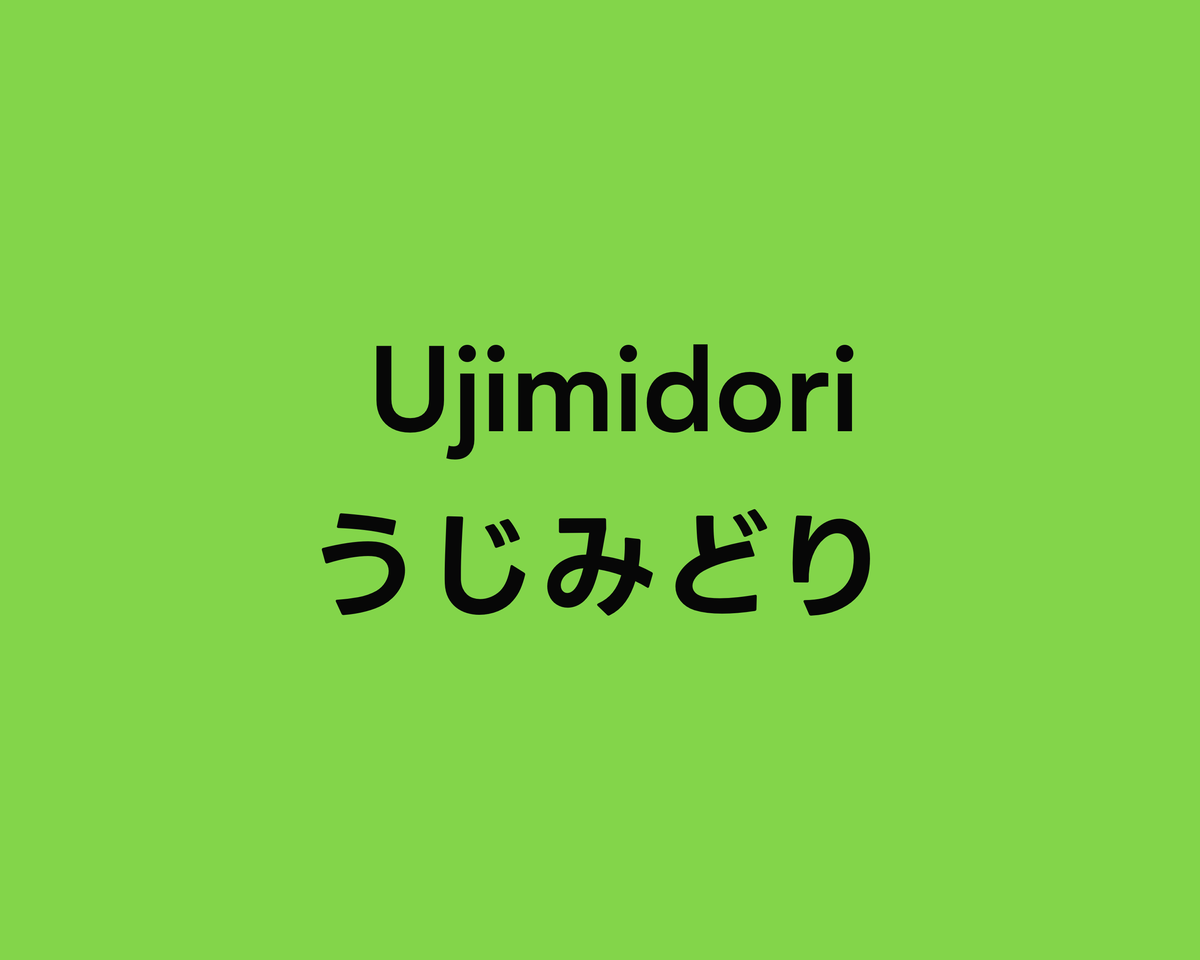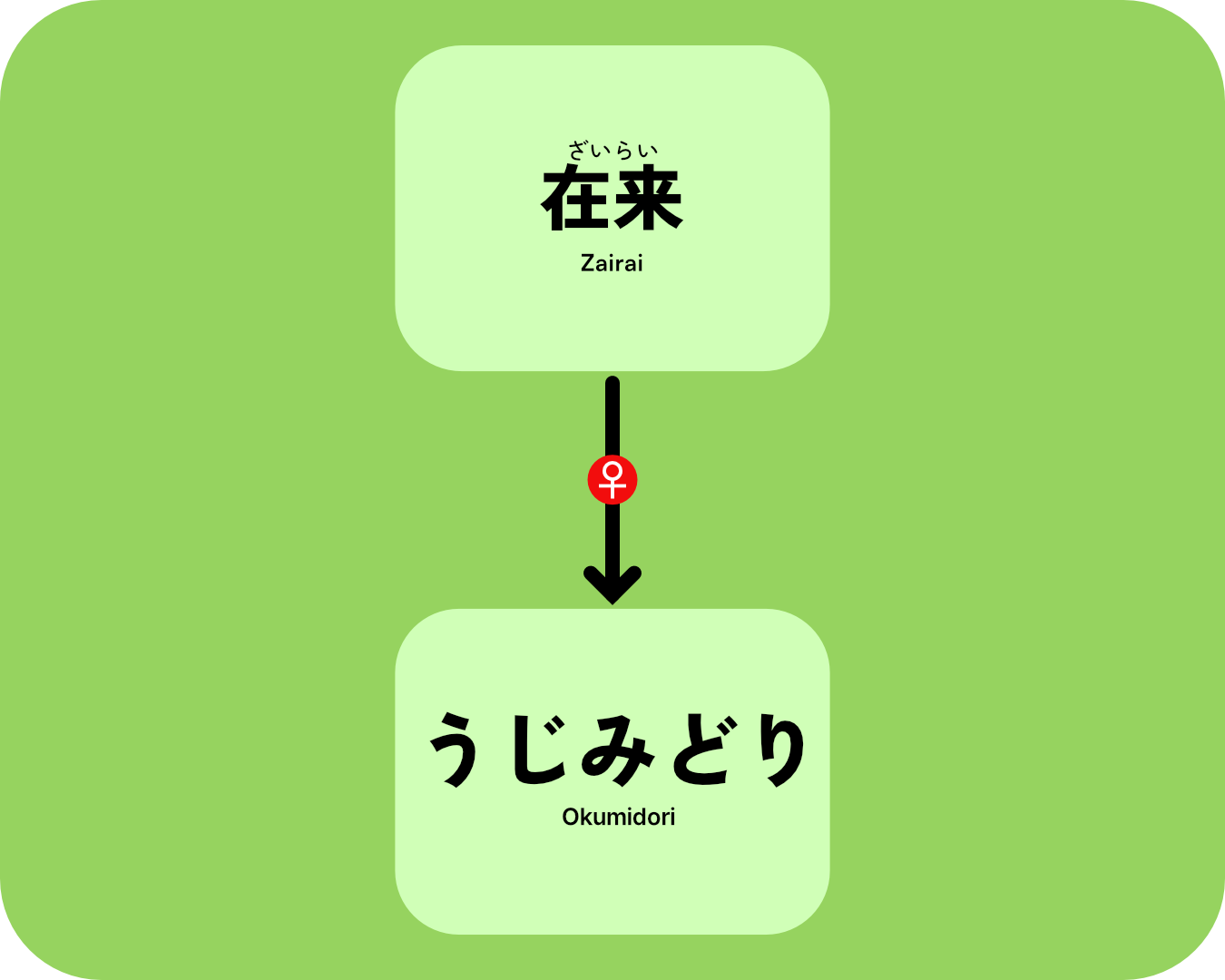Ujimidori うじみどり
It is an unregistered cultivar breed by Kyoto Prefectural Tea Research Centre. Ujimidori, cultivated in 1983 under the strain name Kyoken Nº307 京研307号, is a Uji native species selection

Status: 🌱
Genealogy
♀: Zairai 在来種 selected from Uji 宇治
♂: ?

History
It is an unregistered cultivar breed by Kyoto Prefectural Tea Research Centre. Ujimidori, cultivated in 1983 under the strain name Kyoken Nº307 京研307号, is a Uji native species selection series that bred many cultivars, many of which never became registered. Thus, there is very little information publicly available about it.
Among the traditional Kyoto cultivars, Ujimidori is used for Gyokuro production, characterized by its rich aroma, taste, and strong umami.
Although unregistered and remaining a quite rare cultivar, especially outside the Kyoto prefecture, it has been studied as a way to improve the Uji tea brand by using prefectural cultivars like Gokou and Komakage. One report from the Kyoto prefectural tea research station studied the blend of Yabukita and Ujimidori in different amounts to study its qualitative characteristics. Although the Ujimidori cultivar had an overall better evaluation than Yabukita as a standalone, the best results were those blending Ujimidori with Yabukita, with a ratio of 60% Ujimidori and 40% Yabukita giving the best results two years in a row (2009 and 2010). However, the same result was achieved with Komakage at the same or similar blending percentages.
Characteristics
Ujimidori is an intermediate-shaped tea bush with good early growth. The budding period is a bit after Houshun, an early budding cultivar, but also earlier than two other Kyoto prefecture cultivars, Samidori and Gokou. Its shoots have a good green colour and are considered medium in size. The only paper I found reporting the usual 100 buds weight shows a 5,9g per 100 buds, which is behind the second lightest one at 30,9g. It could be a typo in the report from 1985.
References
Kawamura, Shinya, et al. ‘Lipids of “Tencha”.’ NIPPON SHOKUHIN KOGYO GAKKAISHI, vol. 32, no. 12, 1985, pp. 870–75. DOI.org (Crossref), https://doi.org/10.3136/nskkk1962.32.12_870.
Toyao Tadayuki. ‘Present and Future Prospect: Extention of New Cultivars in Tea Field in Japan’. Chagyo Kenkyu Hokoku (Tea Research Journal), vol. 1989, no. 69, June 1989, pp. 49–64. DOI.org (Crossref), https://doi.org/10.5979/cha.1989.49.
Katrina Wild. ´Japanese Tea Cultivars : A Short Guide´, https://obubutea.com/shop/uncategorized/japanese-tea-cultivars-a-short-guide/
